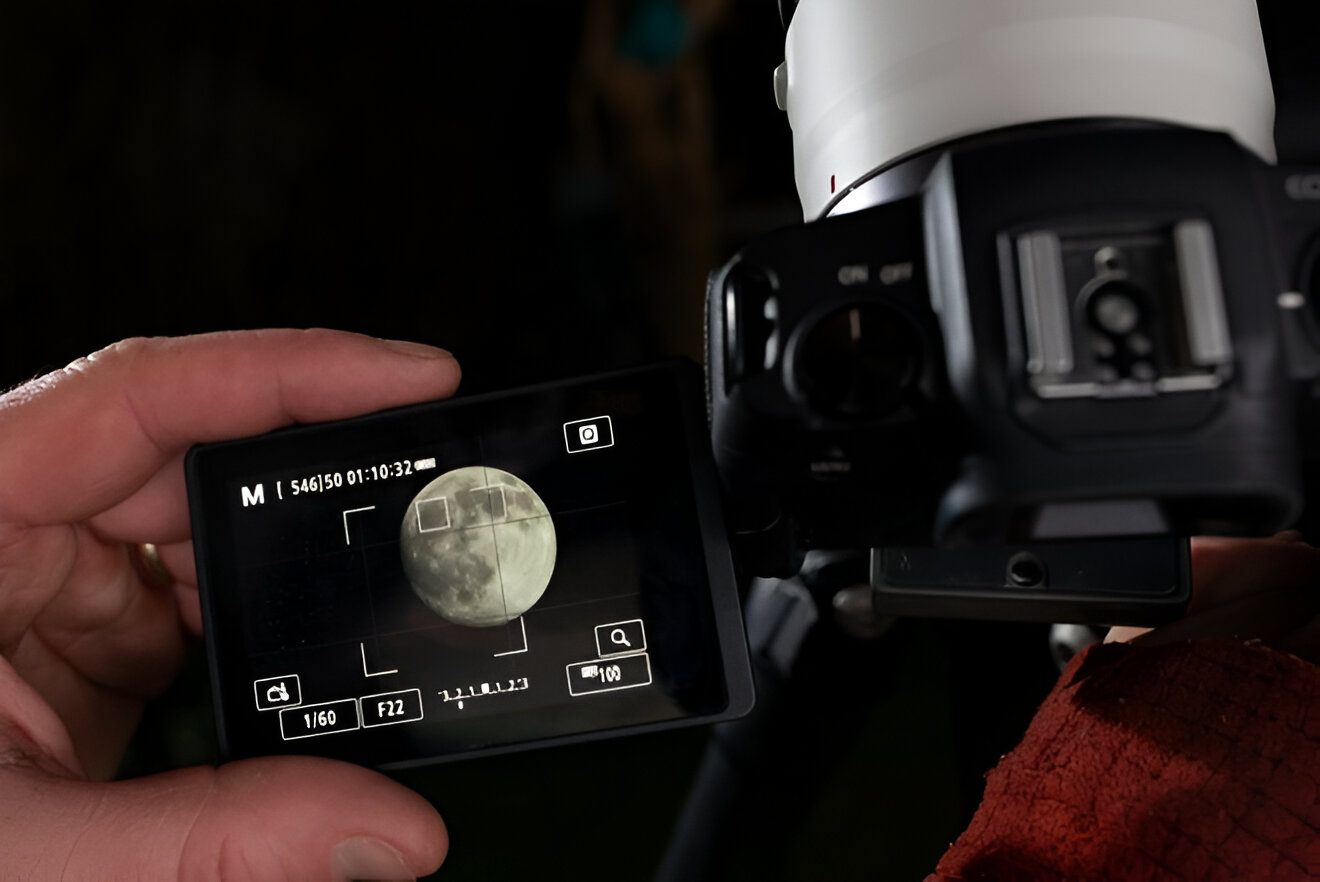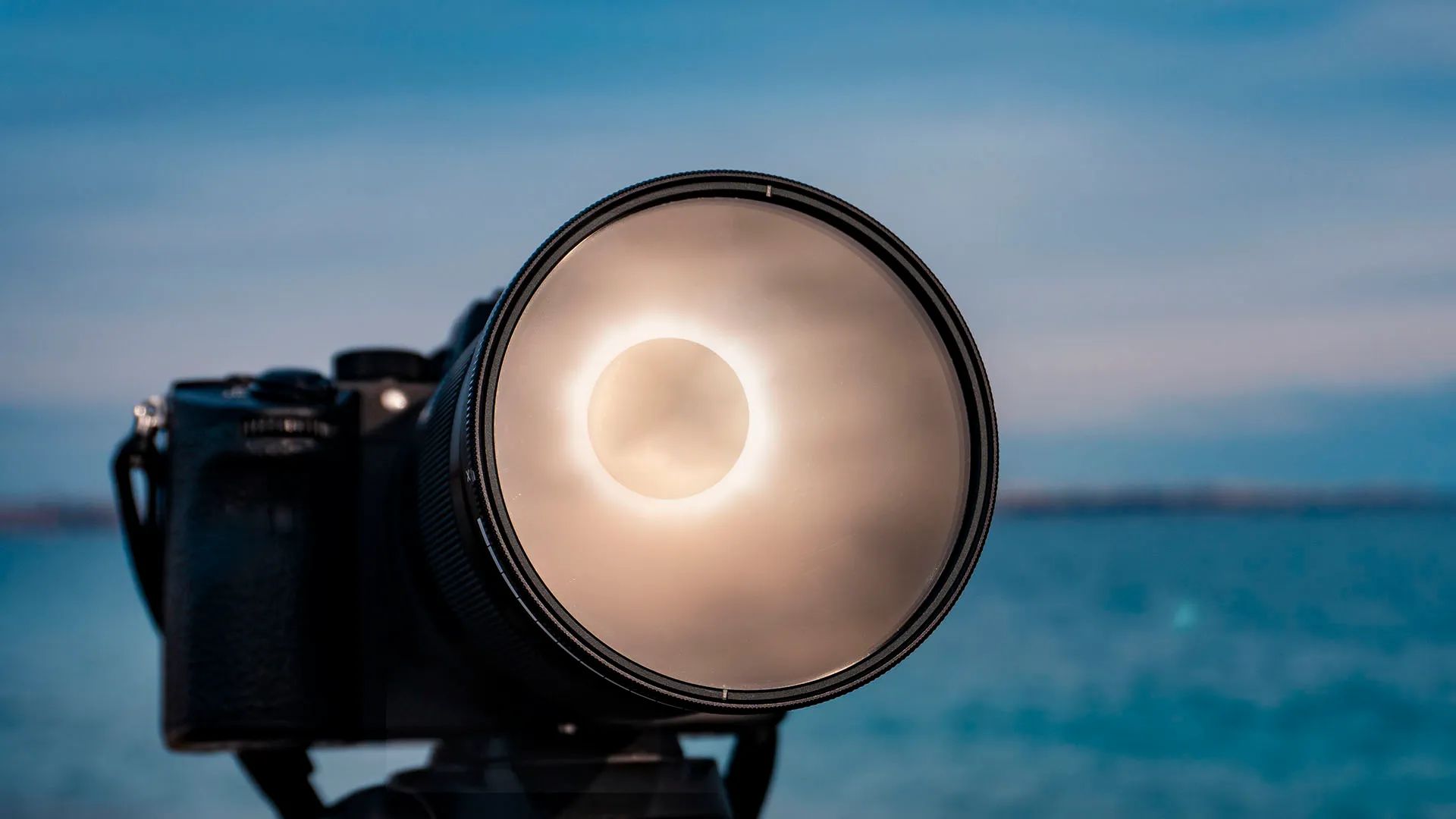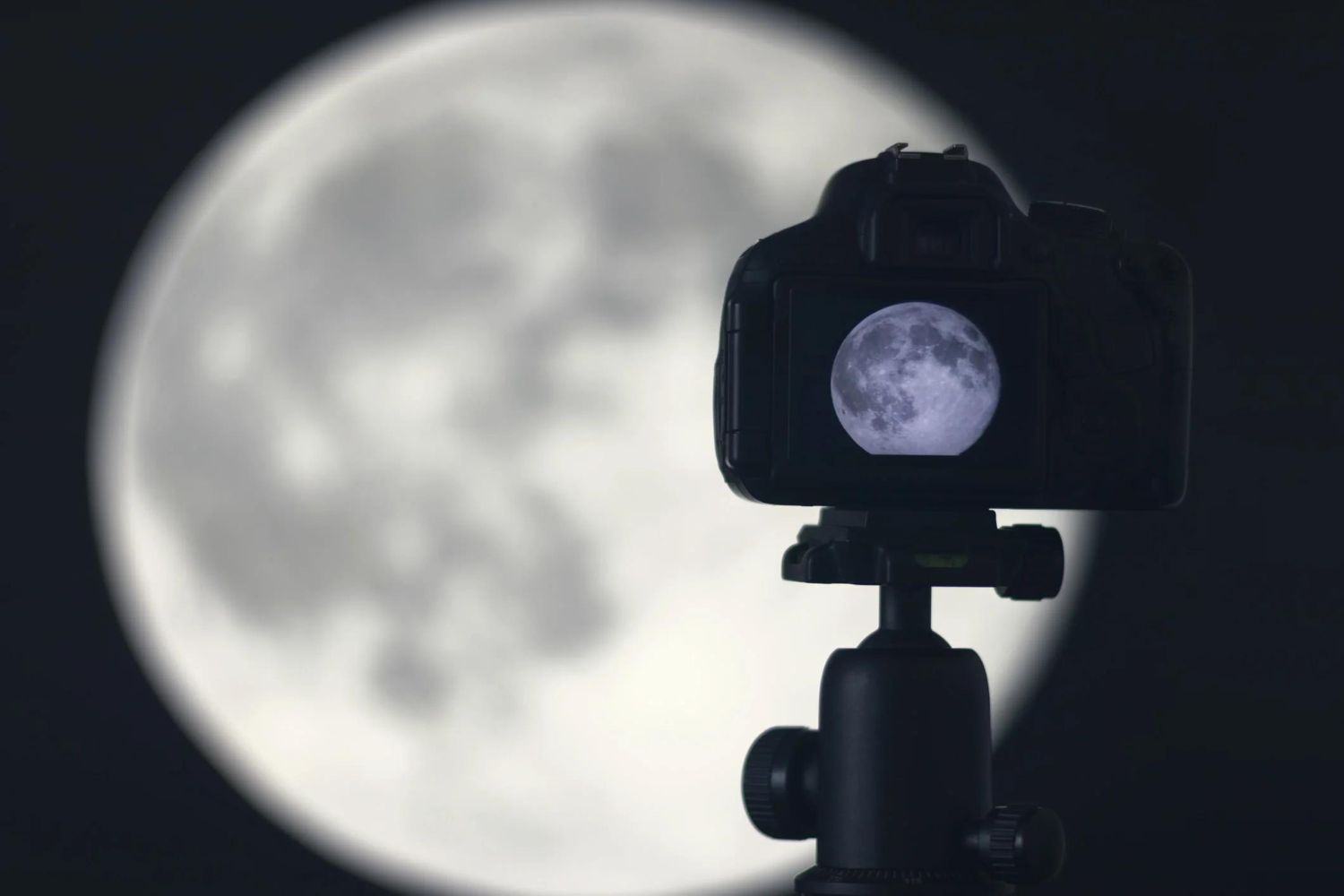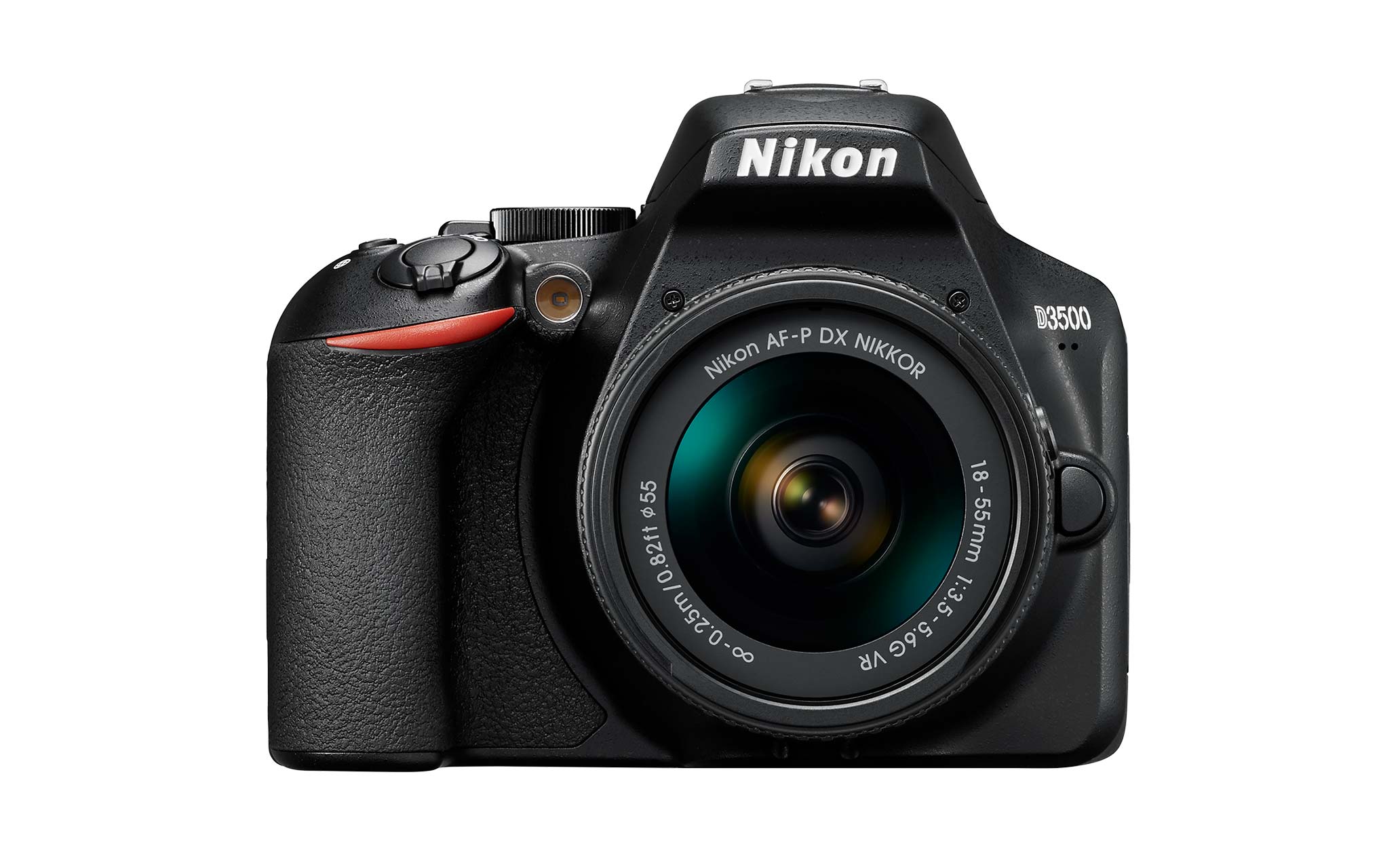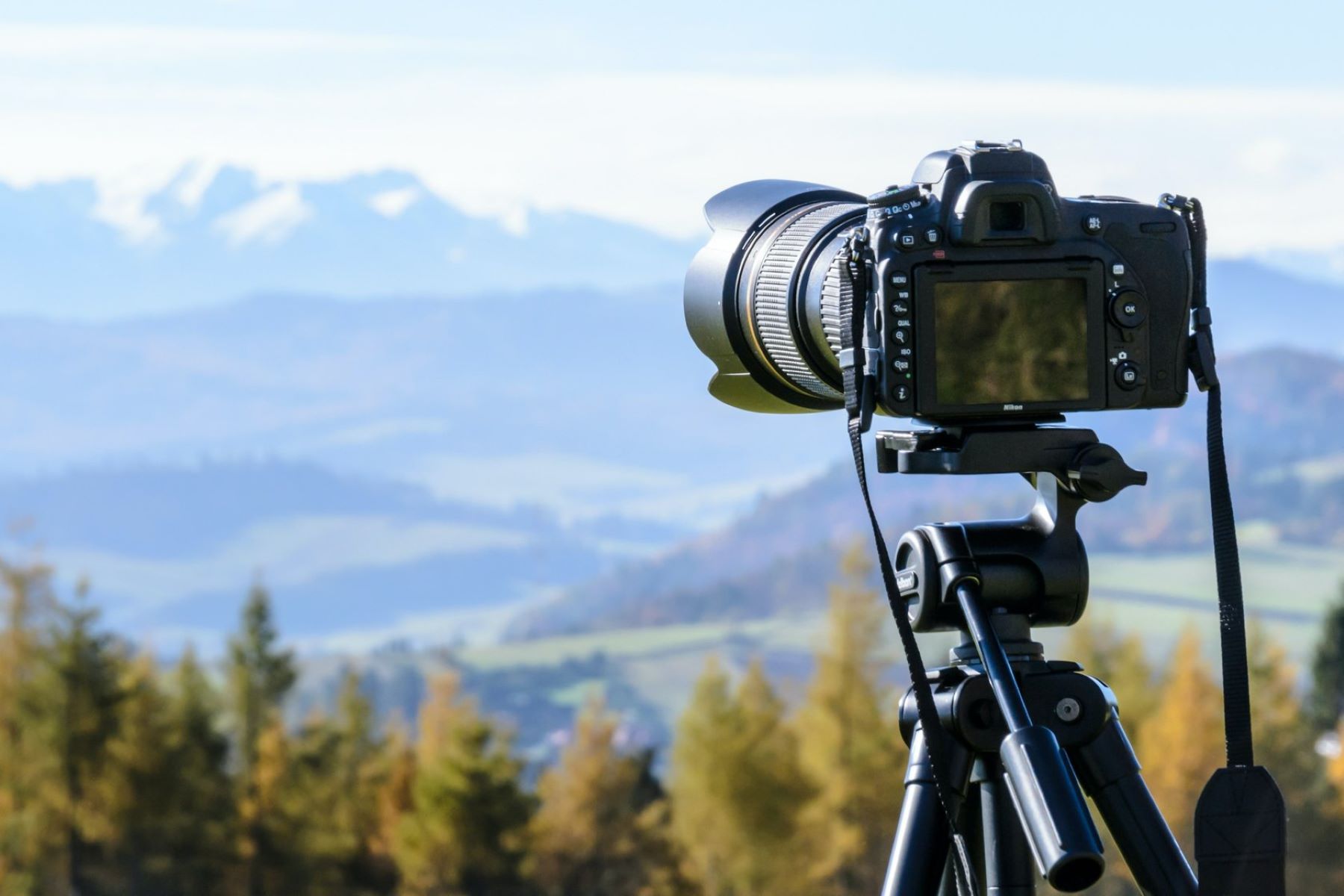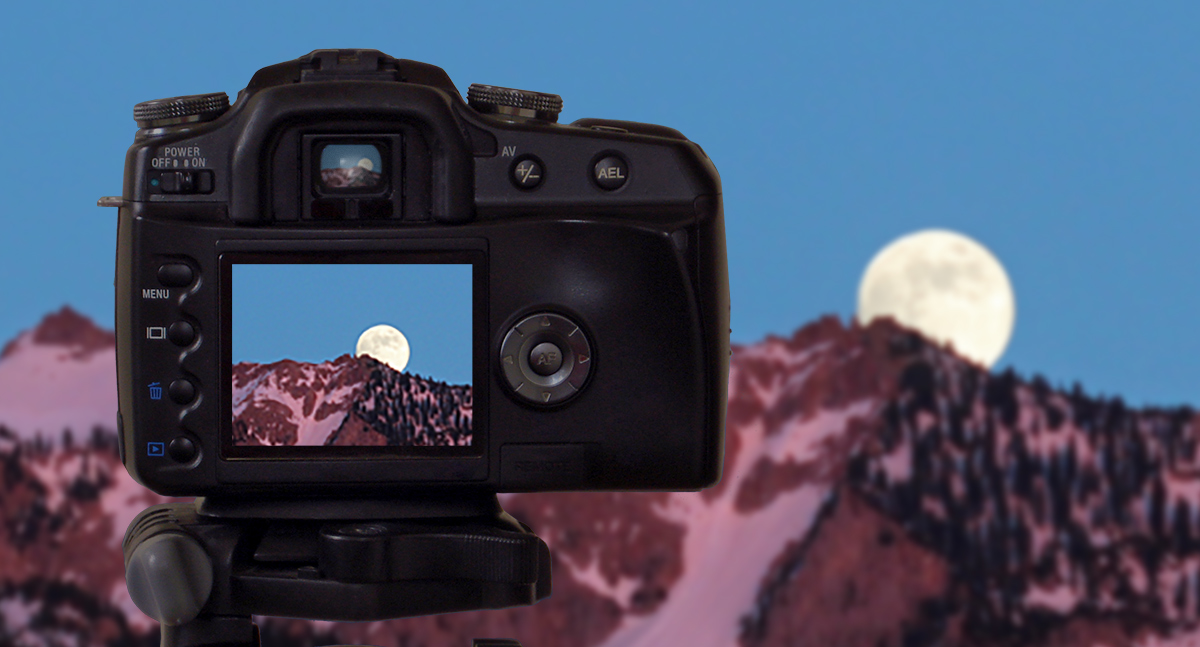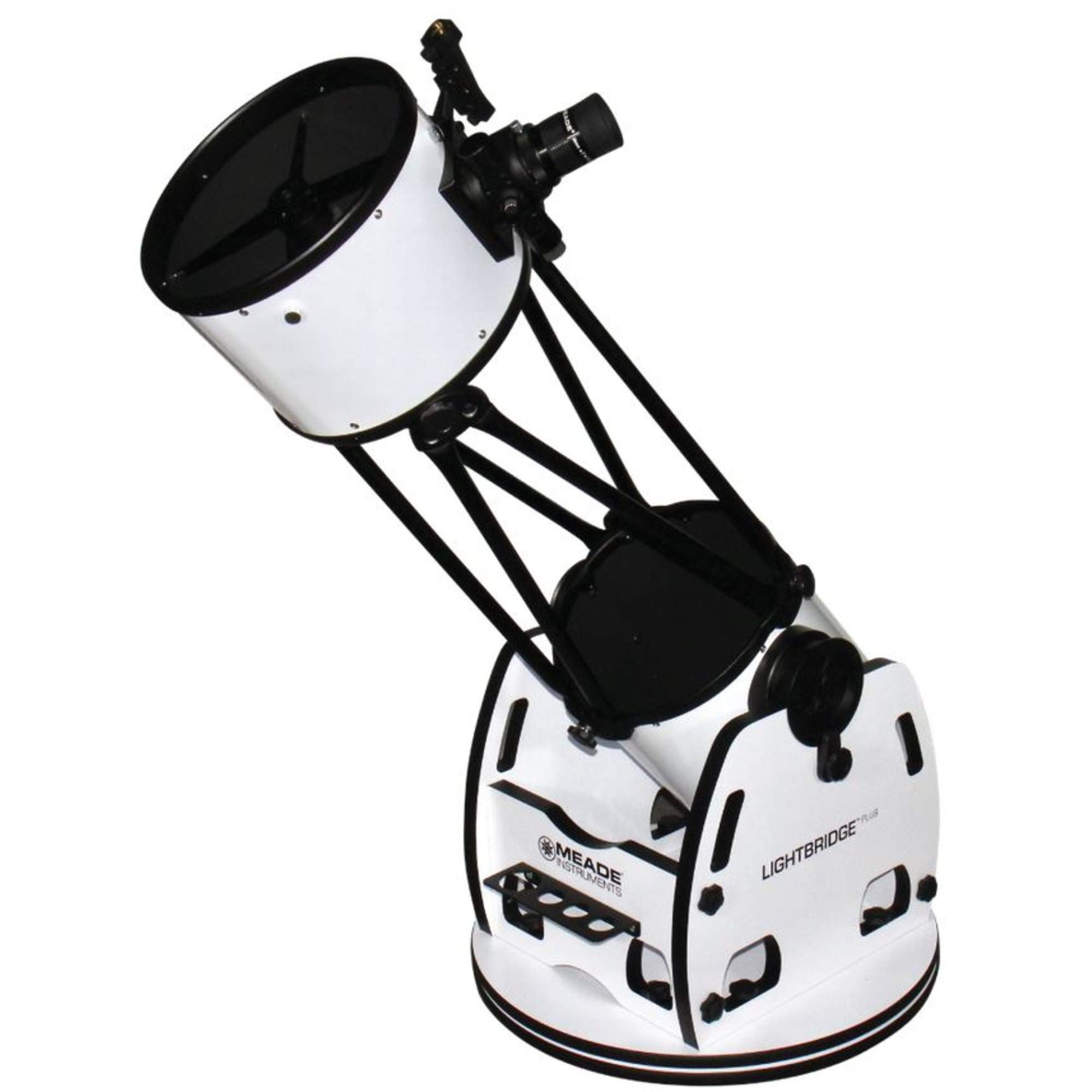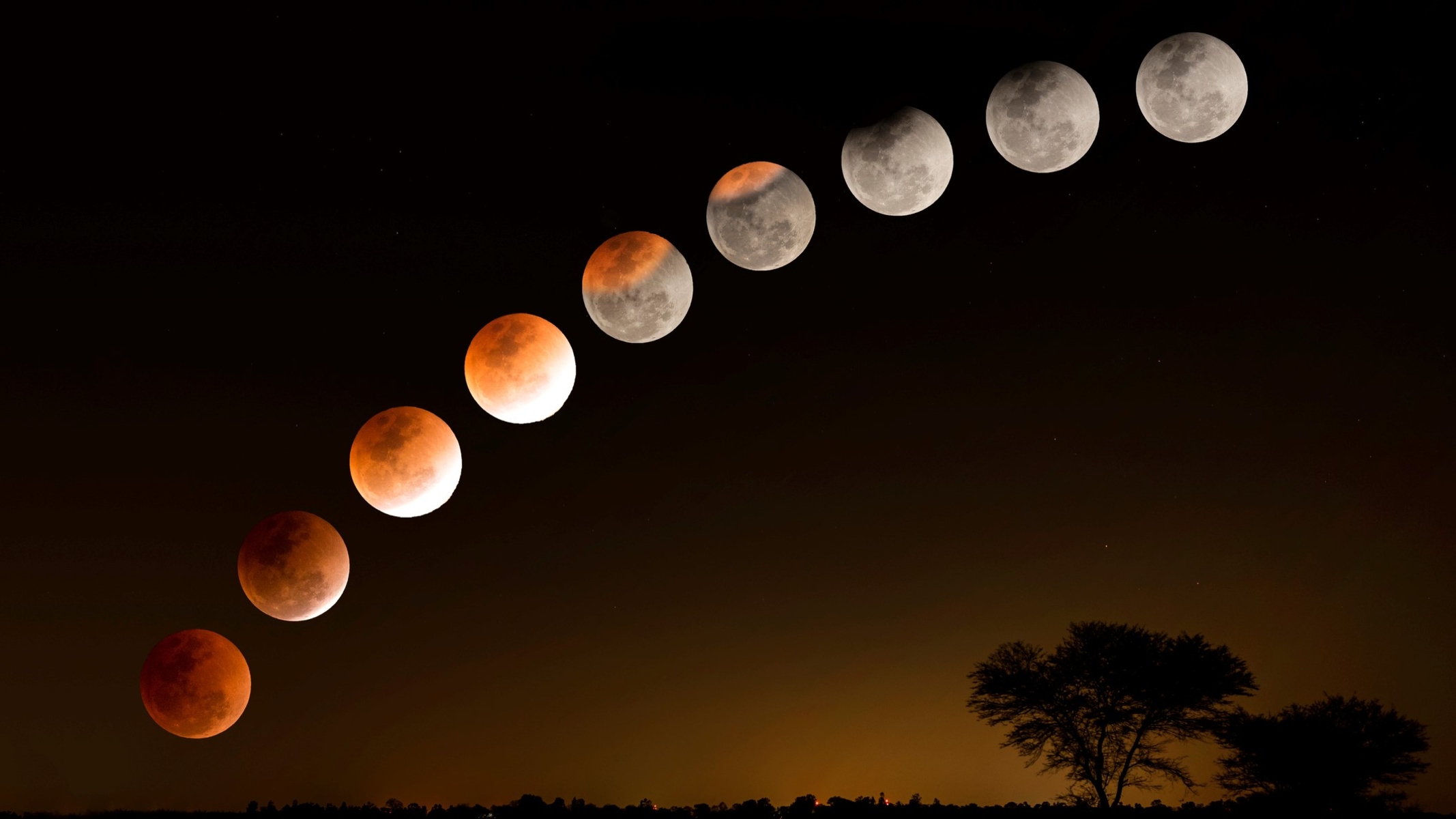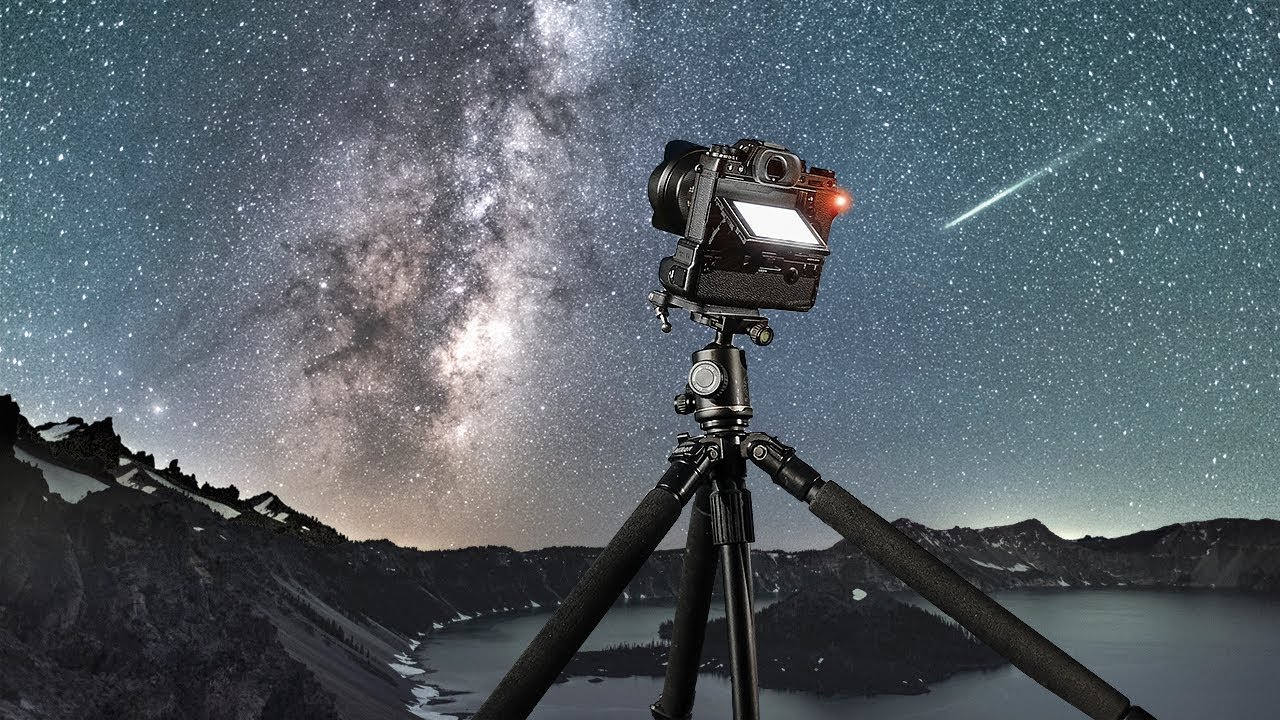Introduction
Capturing stunning images of the moon with a DSLR camera can be a rewarding and awe-inspiring experience. The moon, Earth's natural satellite, has fascinated humanity for centuries with its mesmerizing phases and luminous presence in the night sky. With the advancements in digital photography and the accessibility of DSLR cameras, amateur and professional photographers alike have the opportunity to immortalize the moon's captivating beauty through their lenses.
Photographing the moon requires a unique set of skills and techniques to overcome the challenges posed by its distant and constantly moving subject. This guide aims to provide valuable insights and practical tips for photographers eager to embark on their lunar photography journey. From understanding the moon's phases to mastering the intricacies of camera settings and post-processing, this comprehensive resource will equip you with the knowledge and expertise needed to capture breathtaking images of the moon with your DSLR camera.
Whether you are an enthusiastic stargazer, a nature photography enthusiast, or simply someone in awe of the celestial wonders above, this guide will empower you to elevate your moon photography skills to new heights. By delving into the nuances of lunar photography, you will uncover the secrets to immortalizing the moon's enchanting allure through the lens of your DSLR camera. Let's embark on this celestial adventure together and unlock the potential to capture the moon in all its splendor.
Understanding the Moon’s Phases
The moon undergoes a mesmerizing cycle of phases as it orbits the Earth, transitioning from New Moon to Full Moon and back again. Understanding these phases is crucial for planning and capturing compelling lunar photographs with your DSLR camera.
The lunar cycle begins with the New Moon, where the moon is positioned between the Earth and the sun, rendering its illuminated side invisible from our vantage point. As the moon progresses in its orbit, a thin crescent, known as the Waxing Crescent, becomes visible in the western sky after sunset. This marks the initial phase where lunar photography becomes increasingly feasible, albeit with subtle illumination.
Subsequently, the moon evolves into the First Quarter phase, where half of its illuminated side is visible from Earth. This phase presents an opportune time to capture the moon’s rugged terrain and prominent features, as the interplay of light and shadows accentuates its topography.
As the moon reaches the Waxing Gibbous phase, its illuminated portion continues to expand, offering photographers an ideal balance between illumination and surface details. This phase serves as a prelude to the highly anticipated Full Moon, where the entire face of the moon is brilliantly illuminated, casting a radiant glow across the nocturnal landscape.
Following the Full Moon, the moon enters the Waning Gibbous phase, gradually diminishing in illumination while still showcasing intricate surface features. The Last Quarter phase then ensues, presenting a striking visual of the moon’s half-illuminated disc, before transitioning into the Waning Crescent, signaling the culmination of the lunar cycle and paving the way for a new New Moon.
By comprehending the nuances of the moon’s phases, photographers can strategically plan their lunar photography sessions to capitalize on the varying degrees of illumination and surface visibility. This understanding enables photographers to anticipate the moon’s appearance and optimize their camera settings to capture the moon in its most captivating forms, enriching their photographic endeavors with celestial splendor.
Choosing the Right Equipment
Embarking on a successful moon photography expedition with a DSLR camera necessitates the selection of appropriate equipment tailored to the unique challenges posed by lunar photography. The following considerations will guide you in choosing the right gear to elevate your moon photography endeavors:
- DSLR Camera: Opt for a DSLR camera with manual exposure and focus capabilities, enabling precise control over settings and adjustments. A camera with a high-resolution sensor and low-light performance is advantageous for capturing the moon’s intricate details and luminosity.
- Telephoto Lens: Invest in a telephoto lens with a substantial focal length, such as 200mm or higher, to capture the moon in remarkable detail. A lens with image stabilization capabilities mitigates the impact of camera shake, ensuring sharp and crisp lunar images.
- Tripod: Select a sturdy tripod to stabilize your camera and lens, minimizing vibrations and facilitating steady long-exposure shots. A tripod with a ball head or pan-tilt head offers flexibility in framing and composition, enhancing the precision of your moon photography.
- Remote Shutter Release: Employ a remote shutter release or cable release to trigger the camera without physically touching it, reducing the risk of introducing vibrations during image capture. This accessory is instrumental for achieving sharp and blur-free moon photographs.
- Filters: Consider utilizing specialized lunar filters to attenuate the moon’s intense brightness and enhance contrast, revealing intricate lunar surface details. Neutral density filters can also be employed to regulate exposure and optimize image quality during varying lunar phases.
By equipping yourself with a DSLR camera and complementary accessories tailored to lunar photography, you empower yourself to overcome the inherent challenges of capturing the moon’s celestial beauty. Selecting the right equipment forms the cornerstone of a successful moon photography venture, enabling you to unleash your creative vision and immortalize the moon’s enchanting allure through the lens of your DSLR camera.
Camera Settings for Moon Photography
Mastering the intricacies of camera settings is paramount for achieving exceptional moon photography results with your DSLR camera. By optimizing key parameters, you can capture the moon’s ethereal beauty with precision and finesse. Here are the essential camera settings to consider:
- Manual Mode: Engage manual mode on your DSLR camera to exert full control over exposure, aperture, and ISO settings. This mode empowers you to fine-tune each parameter to suit the specific lighting conditions and lunar phases, ensuring optimal image quality.
- Low ISO: Select a low ISO setting, such as ISO 100 or 200, to minimize digital noise and preserve image clarity. The moon’s radiant illumination allows for low ISO values while maintaining the integrity of intricate lunar details.
- Aperture Priority: Opt for a narrow aperture, typically between f/8 and f/11, to attain a balanced depth of field and sharpness across the lunar surface. Adjustments to the aperture facilitate the preservation of lunar details and the mitigation of lens aberrations.
- Shutter Speed: Employ relatively fast shutter speeds to counteract the moon’s apparent motion across the night sky. A starting point for shutter speed can be around 1/125 to 1/250 seconds, with adjustments made based on the lunar phase and desired exposure.
- Spot Metering: Utilize spot metering to gauge precise exposure readings from the moon’s surface, preventing overexposure and preserving intricate lunar features. By metering the moon’s luminous regions, you can fine-tune exposure settings for optimal image rendition.
- Manual Focus: Engage manual focus mode to achieve pinpoint sharpness when capturing the moon. Fine-tune the focus ring to attain crisp lunar details, ensuring that the moon’s surface features are rendered with exceptional clarity and definition.
By adeptly configuring your DSLR camera’s settings in alignment with the aforementioned guidelines, you position yourself to capture the moon’s resplendent visage with unparalleled fidelity and artistry. These settings serve as the cornerstone of exceptional moon photography, enabling you to harness the full potential of your DSLR camera and craft captivating lunar images that resonate with celestial splendor.
Using a Tripod for Stability
Stability is paramount in lunar photography, and employing a tripod is indispensable for achieving sharp, well-defined images of the moon with your DSLR camera. The following insights elucidate the significance of utilizing a tripod and offer guidance on maximizing its effectiveness in lunar photography:
- Vibration Reduction: A sturdy tripod mitigates the impact of camera shake, ensuring that your lunar images remain crisp and devoid of blurring. By minimizing vibrations, the tripod facilitates long-exposure shots, allowing you to capture the moon’s intricate details with exceptional clarity.
- Steady Composition: The use of a tripod promotes deliberate and steady composition, empowering you to frame the moon with precision and finesse. This stability is particularly advantageous when employing telephoto lenses to magnify the moon, as even minor movements can compromise image sharpness.
- Long-Exposure Capabilities: With a tripod providing a stable foundation, you can explore long-exposure techniques to capture the moon’s luminous presence against the backdrop of the night sky. This extended exposure duration unveils subtle lunar details and accentuates the moon’s radiance, resulting in captivating and ethereal imagery.
- Flexibility in Framing: A tripod with a ball head or pan-tilt head facilitates seamless adjustments to your camera’s orientation and framing, allowing you to compose the perfect lunar shots with ease. This adaptability empowers you to experiment with different perspectives and compositions, enhancing the creative potential of your moon photography.
- Nighttime Stability: When photographing the moon during nighttime, a tripod provides essential stability in low-light conditions, ensuring that your camera remains steady throughout the image capture process. This stability is instrumental in achieving optimal image quality and revealing the moon’s enchanting allure with unparalleled clarity.
By integrating a tripod into your lunar photography endeavors, you elevate the technical precision and artistic finesse of your moon images, capturing the celestial splendor of the moon with unwavering sharpness and clarity. The tripod serves as an indispensable tool in your photographic arsenal, enabling you to transcend the challenges of lunar photography and immortalize the moon’s captivating beauty with unparalleled stability and precision.
Finding the Best Time to Photograph the Moon
Timing plays a pivotal role in lunar photography, influencing the visual impact and quality of your moon images captured with a DSLR camera. Understanding the optimal times to photograph the moon empowers you to harness ideal lighting conditions and celestial dynamics, enhancing the allure and visual impact of your lunar compositions. Consider the following factors when determining the best time to embark on your lunar photography expeditions:
- Moonrise and Moonset: The moments of moonrise and moonset present captivating opportunities to photograph the moon against the horizon, accentuating its ethereal presence amidst terrestrial landscapes. Research the specific times of moonrise and moonset in your location to plan your photographic sessions accordingly, leveraging the enchanting interplay of celestial and earthly elements.
- Phase-Specific Considerations: Each phase of the moon offers distinct visual characteristics and photographic potential. For example, the Waxing Crescent and Waning Crescent phases, with their subtle illumination, lend themselves to evocative compositions featuring the moon alongside terrestrial elements. Conversely, the Full Moon, with its radiant luminosity, illuminates landscapes and celestial scenes with captivating brilliance.
- Weather and Atmospheric Conditions: Monitoring weather forecasts and atmospheric conditions is crucial for optimizing the visual impact of your moon photography. Clear, unobstructed skies facilitate the unhindered capture of lunar details, while atmospheric phenomena such as haze or clouds can introduce captivating visual dynamics or hinder lunar visibility, necessitating creative adaptation in your compositions.
- Night Sky Visibility: Assess the ambient light and sky visibility in your chosen location, ensuring that light pollution and atmospheric clarity align with your photographic objectives. Seek out locations with minimal light pollution to accentuate the moon’s luminous presence and reveal the celestial expanse with unparalleled clarity.
- Golden Hour and Twilight: Embrace the enchanting ambiance of the golden hour and twilight periods, where the interplay of natural light and celestial radiance imbues your moon photography with a captivating, ethereal quality. These transitional phases offer a harmonious convergence of terrestrial and celestial illumination, elevating the visual impact of your lunar compositions.
By discerning the optimal times for moon photography and aligning your photographic endeavors with celestial and terrestrial dynamics, you unlock the potential to capture the moon in its most evocative and visually compelling forms. Embrace the interplay of light, atmosphere, and lunar phases to orchestrate captivating lunar compositions that resonate with celestial splendor and artistic finesse.
Tips for Focusing on the Moon
Attaining precise focus is pivotal in capturing the intricate details and celestial allure of the moon in your DSLR photography. By implementing strategic focusing techniques, you can elevate the clarity and visual impact of your lunar images, immortalizing the moon’s captivating visage with unparalleled sharpness and finesse. Consider the following tips to refine your focusing approach when photographing the moon:
- Manual Focus Precision: Engage manual focus mode on your DSLR camera to exert precise control over focusing, allowing you to finely adjust the focus ring until the lunar details are rendered with exceptional clarity and definition. Manual focus empowers you to overcome autofocus limitations and achieve pinpoint sharpness in your moon images.
- Utilize Live View: Leverage the Live View function on your DSLR camera to magnify the moon’s image on the rear LCD screen, facilitating meticulous focus adjustments. This real-time visual feedback enables you to scrutinize lunar details and refine focus with enhanced precision, ensuring optimal sharpness in your compositions.
- Focusing Aids: Capitalize on your camera’s focusing aids, such as focus peaking or magnification, to identify and accentuate the intricate lunar features, guiding you in achieving optimal focus accuracy. These aids provide invaluable visual cues for refining focus and capturing the moon’s celestial allure with exceptional clarity.
- Pre-Focusing Techniques: Anticipate the moon’s position and employ pre-focusing techniques by capturing test shots and fine-tuning focus before the moon reaches its optimal photographic vantage point. This proactive approach minimizes focusing adjustments during peak shooting moments, ensuring that you capture the moon with unwavering sharpness and precision.
- Bracketed Focusing: Implement bracketed focusing by capturing a series of images with incremental focus adjustments, allowing you to evaluate and select the frame with the most compelling and precise lunar focus. This iterative approach hones in on the ideal focus point, enabling you to capture the moon with exceptional sharpness and visual impact.
By integrating these focusing tips into your lunar photography workflow, you enhance the technical precision and visual allure of your moon images, capturing the celestial splendor of the moon with unwavering sharpness and clarity. These techniques empower you to transcend the challenges of lunar focusing and immortalize the moon’s captivating beauty with unparalleled finesse and artistry.
Post-Processing Your Moon Photos
Post-processing serves as a transformative phase in lunar photography, allowing you to refine and enhance the visual impact of your moon photos captured with a DSLR camera. By leveraging post-processing techniques, you can elevate the celestial allure and intricate details of the moon, infusing your lunar compositions with captivating finesse and visual resonance. Consider the following post-processing guidelines to enrich your moon photography endeavors:
- Exposure and Contrast Adjustment: Fine-tune exposure and contrast parameters to optimize the luminosity and tonal range of your moon images. Balancing the exposure accentuates lunar details, while contrast adjustments emphasize surface textures and topographical features, enhancing the visual impact of your compositions.
- Sharpening and Detail Enhancement: Apply selective sharpening and detail enhancement to accentuate the intricate lunar features, refining the clarity and definition of surface elements. This meticulous refinement unveils the moon’s celestial allure with unparalleled sharpness and finesse, enriching the visual narrative of your lunar compositions.
- Noise Reduction: Employ noise reduction techniques to mitigate digital noise and optimize the overall image quality of your moon photos. By refining the noise characteristics, you preserve the integrity of lunar details and minimize visual distractions, ensuring that your compositions resonate with exceptional clarity and refinement.
- Color Correction and Toning: Fine-tune color balance and tonal nuances to evoke the ethereal ambiance and celestial radiance inherent to lunar photography. Harmonizing color palettes and tonal ranges imbues your moon compositions with evocative visual qualities, elevating the celestial allure and emotive resonance of your lunar images.
- Cropping and Composition Refinement: Apply strategic cropping and composition refinements to optimize the visual dynamics and spatial balance of your moon compositions. By refining the framing and orientation, you accentuate the moon’s celestial presence and refine the visual narrative, imbuing your lunar images with captivating finesse and compositional harmony.
By integrating these post-processing techniques into your lunar photography workflow, you enrich the visual narrative and celestial allure of your moon images, capturing the moon’s resplendent visage with unparalleled finesse and artistic resonance. Post-processing serves as a transformative phase, enabling you to refine and elevate the visual impact of your lunar compositions, immortalizing the moon’s captivating beauty with unrivaled clarity and finesse.
Conclusion
Embarking on a lunar photography journey with a DSLR camera unveils a realm of celestial splendor and visual enchantment, inviting photographers to immortalize the moon’s captivating allure through their lenses. By delving into the nuances of moon phases, understanding optimal shooting times, and mastering the intricacies of camera settings, photographers can elevate their lunar photography skills and capture the moon in all its resplendent glory.
Choosing the right equipment tailored to lunar photography, such as a DSLR camera with manual capabilities, telephoto lenses, and stable tripods, forms the cornerstone of a successful moon photography venture. The integration of strategic focusing techniques and post-processing refinements further enriches the visual narrative and celestial allure of lunar compositions, enhancing the clarity and finesse of moon images.
As photographers immerse themselves in the celestial dance of lunar phases and the interplay of light and shadows across the moon’s surface, they unlock the potential to craft captivating lunar images that resonate with evocative visual qualities and celestial resonance. Each lunar photography expedition becomes an odyssey of artistic exploration, where photographers endeavor to immortalize the moon’s enchanting beauty with unwavering precision and finesse.
Through the fusion of technical expertise, creative vision, and an unwavering passion for celestial wonders, photographers can transcend the challenges of lunar photography and unveil the moon’s resplendent visage with unparalleled clarity and artistic resonance. The celestial allure of the moon beckons, inviting photographers to embark on a captivating odyssey of lunar exploration and visual storytelling, where each image captured becomes a testament to the timeless allure and celestial splendor of Earth’s mesmerizing satellite.







